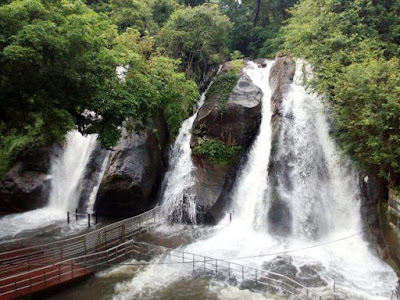#ashokasays Did you know 266:
We have admired "The Grand Canyon" of the USA and many Indians yearn to go over there during their visit to the United States. Yes it is an amazing place and no doubt about it. But you need to visit Gandikota a small village located in Kadapa district in Andhra Pradesh. You can see "The Grand Canyon" of India.
Situated on the banks of river Pennar, Gandikota derives its name from two Telugu words ‘Gandi’ meaning gorge and, ‘kota’ meaning fort.
This quaint little village situated on the banks of the Pennar River, is home to some major historical structures. The fort premises include small fortresses, a granary and two beautiful temples dedicated to Ranganatha Swami and Madhava Swami. These temples are an example of fine architecture and design. It is believed that these temple were constructed more than 500 years ago. The buildings are very attractive and put a dashing impact on devotee because of its surroundings.
All of these ruins speak of their prime even as the structures seem to be on the verge of crumbling. Gandikota Fort comprises of several other structures, such as, a palace, a magazine, another granary and a pigeon tower which included fretted windows. The palace was mostly constructed with bricks and included plastered decorations.
Its worthwhile a visit to this place, spread the greatness and the grand old days of this country.
INCREDIBLE BHARATHA
We have admired "The Grand Canyon" of the USA and many Indians yearn to go over there during their visit to the United States. Yes it is an amazing place and no doubt about it. But you need to visit Gandikota a small village located in Kadapa district in Andhra Pradesh. You can see "The Grand Canyon" of India.
Situated on the banks of river Pennar, Gandikota derives its name from two Telugu words ‘Gandi’ meaning gorge and, ‘kota’ meaning fort.
The region of Gandikota
was established in 1123 under the Western Chalukyan king of Kalyana
named Ahavamalla Someswara I. The Gandikota fort was constructed by the
Kappa king during 13th century.
Also known as George
fort, it is guarded by a huge entrance gate that’s 20 feet high and 101
bastions each over 40 feet high. The fort is surrounded by the deep
gorge, impenetrable hills and dense forest. The landscape also includes
monolithic boulders of red granite. All these provided a natural line of
defense to the residents of the fort. The area is full of rocky plains
and dry plateau land forms with the Penner river flowing in the
background.This quaint little village situated on the banks of the Pennar River, is home to some major historical structures. The fort premises include small fortresses, a granary and two beautiful temples dedicated to Ranganatha Swami and Madhava Swami. These temples are an example of fine architecture and design. It is believed that these temple were constructed more than 500 years ago. The buildings are very attractive and put a dashing impact on devotee because of its surroundings.
All of these ruins speak of their prime even as the structures seem to be on the verge of crumbling. Gandikota Fort comprises of several other structures, such as, a palace, a magazine, another granary and a pigeon tower which included fretted windows. The palace was mostly constructed with bricks and included plastered decorations.
There are yet many
unexplored places and things in the region. Recent architectural
research has revealed the presence of underground passages that connect
the fort with the valley.
INCREDIBLE BHARATHA

















































